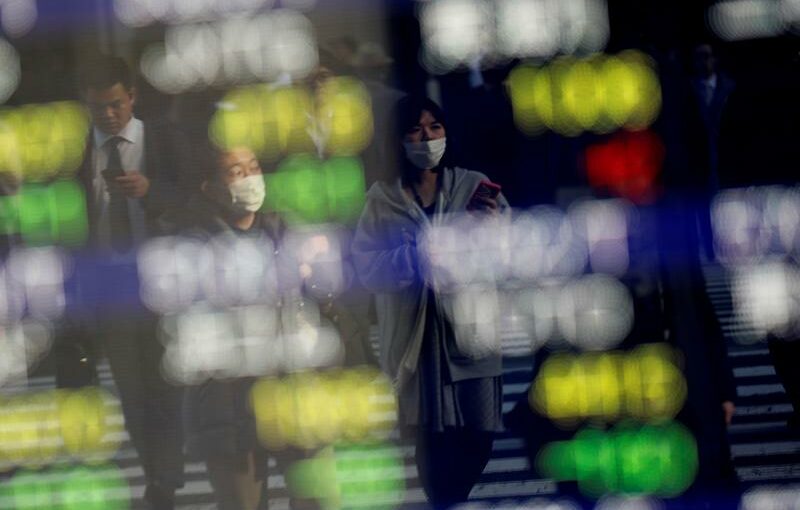SYDNEY (Reuters) – Asian share markets got the new year off to a solid start on Monday on expectations central banks will keep money super cheap while the rollout of coronavirus vaccines helps slowly revive the global economy.
With so much growth already priced in, it might be hard for economies to match markets’ high hopes, but for now momentum was with the bulls. MSCI’s broadest index of Asia-Pacific shares outside Japan edged up 0.1%, a whisker from a record high.
Japan’s Nikkei rose 0.4% to reach peaks not seen since August 1990, having added 16% last year. E-Mini futures for the S&P 500 were flat after touching a new all-time high in early trade.
Investors are cautiously watching runoff elections in Georgia for two U.S. Senate seats on Tuesday that will determine which party controls the Senate.
If the Republicans win one or both, they will retain a slim majority in the chamber and can block President-elect Joe Biden’s legislative goals and judicial nominees.
“If Democrats win both races, Vice President-elect Kamala Harris would be the tiebreaking vote, giving the party unified control of the White House and Congress,” noted analysts at CBA.
“This would raise the likelihood a material U.S. infrastructure spending package gets fast tracked through Congress.”
Minutes of the Federal Reserve’s December meeting due on Wednesday should offer more detail on discussions about making their forward policy guidance more explicit and the chance of a further increase in asset buying this year.
The data calendar includes a raft of manufacturing surveys across the globe, which will show how industry is coping with the spread of the coronavirus, and the closely watched ISM surveys of U.S. factories and services.
Friday sees the December payroll report where median forecasts are for only a modest increase of 100,000.
Analysts as Barclays are tipping a fall of 50,000 in jobs, which would be a shock to market hopes of a speedy recovery.
“A number of incoming indicators on activity point to slower momentum as the economy closes out the year, including data on labour markets where initial claims rose during the December survey period,” said economist Michael Gapen in a note.
Such a drop would add pressure on the Fed to ease further, another burden for the dollar which is already buckling under the weight of the massive U.S. budget and trade deficits.
The dollar index was last at 89.828, not far from its recent 2-1/2-year low of 89.515 having shed almost 7% in 2020.
The euro inched up to $1.2245, having run into profit taking late last week when it reached the highest since early 2018 at $1.2309. It gained almost 9% over 2020.
The dollar held at 103.14 yen, having again survived a test of key support at 102.55. Sterling was firm at $1.3674, within spitting distance of its recent top of $0.13686.
The decline in the dollar has been a support for gold, leaving the metal 0.6% firmer at $1,910 an ounce.
Oil prices have steadied after a couple of months of solid gains, with Brent meeting resistance around $52.50 a barrel. The rebound still left Brent down 21.5% for the year, and WTI 20.5%.
On Monday, Brent crude futures fell 8 cents to $51.72, while U.S. crude eased 12 cents to $48.40 a barrel.
Source: Read Full Article
